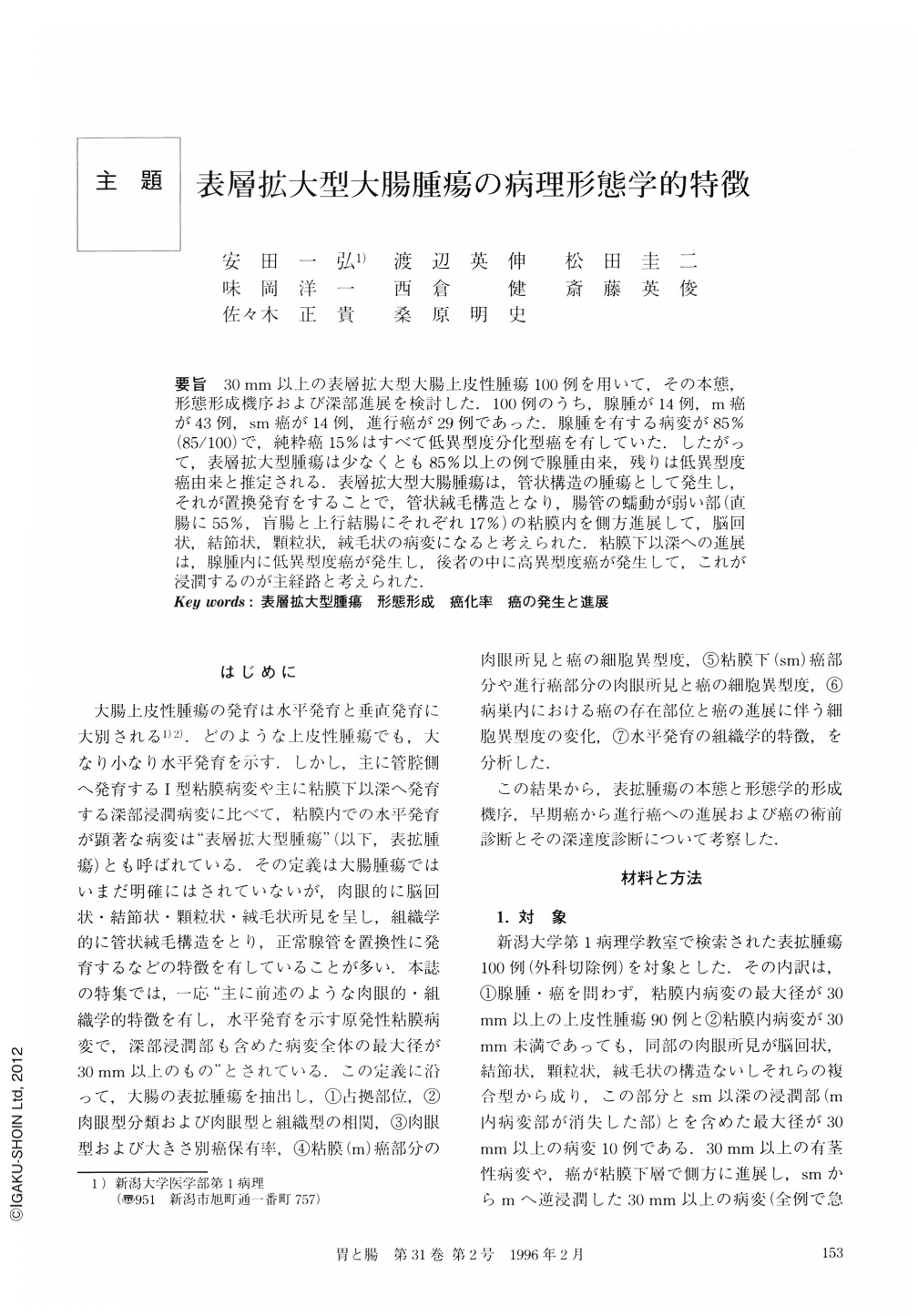Japanese
English
- 有料閲覧
- Abstract 文献概要
- 1ページ目 Look Inside
- サイト内被引用 Cited by
要旨 30mm以上の表層拡大型大腸上皮性腫瘍100例を用いて,その本態,形態形成機序および深部進展を検討した.100例のうち,腺腫が14例,m癌が43例,sm癌が14例,進行癌が29例であった.腺腫を有する病変が85%(85/100)で,純粋癌15%はすべて低異型度分化型癌を有していた.したがって,表層拡大型腫瘍は少なくとも85%以上の例で腺腫由来,残りは低異型度癌由来と推定される.表層拡大型大腸腫瘍は,管状構造の腫瘍として発生し,それが置換発育をすることで,管状絨毛構造となり,腸管の蠕動が弱い部(直腸に55%,盲腸と上行結腸にそれぞれ17%)の粘膜内を側方進展して,脳回状,結節状,顆粒状,絨毛状の病変になると考えられた.粘膜下以深への進展は,腺腫内に低異型度癌が発生し,後者の中に高異型度癌が発生して,これが浸潤するのが主経路と考えられた.
We studied the nature, morphogenesis and malignant transformation of superficial spreading (epithelial) tumor (SST) of the colon and rectum, using 100 such tumors measuring 30 mm or more in size. Fourteen tumors were adenoma, 43; intramucosal cancer, 14; submucosal cancer and 29 were advanced cancer. Eighty-five of 100 tumors contained adenoma-area, and the remaining 15 tumors consisted of carcinoma itself (cytologically low-grade or low- and high-grade cancer). Therefore, it is suggested. that more than 85% of SST arise from adenoma and the remaining from low-grade carcinoma.
SST seems to develop in a tubular adenoma or a low-grade adenocarcinoma at an early stage, then takes a tubulovillous pattern by replacing the nonneoplastic cells in the tubules (replacing growth), and further extends laterally into the surrounding mucosa with replacing growth in the rectum, cecum and ascending colon (lower part) where intestinal peristalsis is weak.
It is suggested that the main route for advanced carcinoma in SST is through a low-grade cancer developing in tubulovillous or villous superficial spreading adenomas, predominantly at their central part, and then a high-grade cancer arises in the low-grade cancer at a late stage compared to the common adenoma-carcinoma sequence and, at last, the high-grade cancer invades the submucosa and eventually reaches the deeper layers.

Copyright © 1996, Igaku-Shoin Ltd. All rights reserved.


